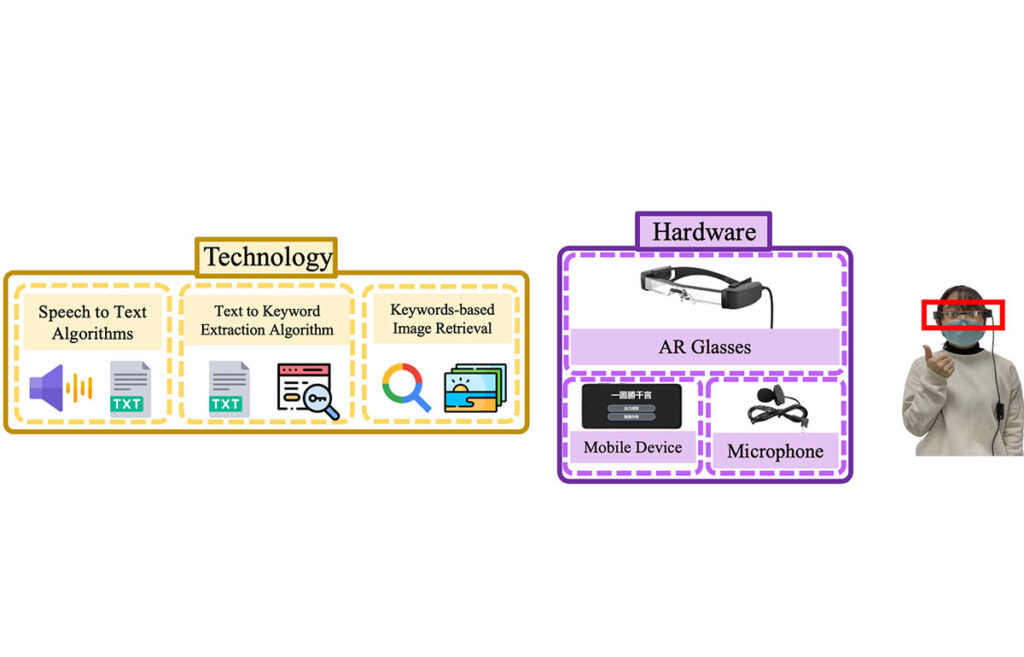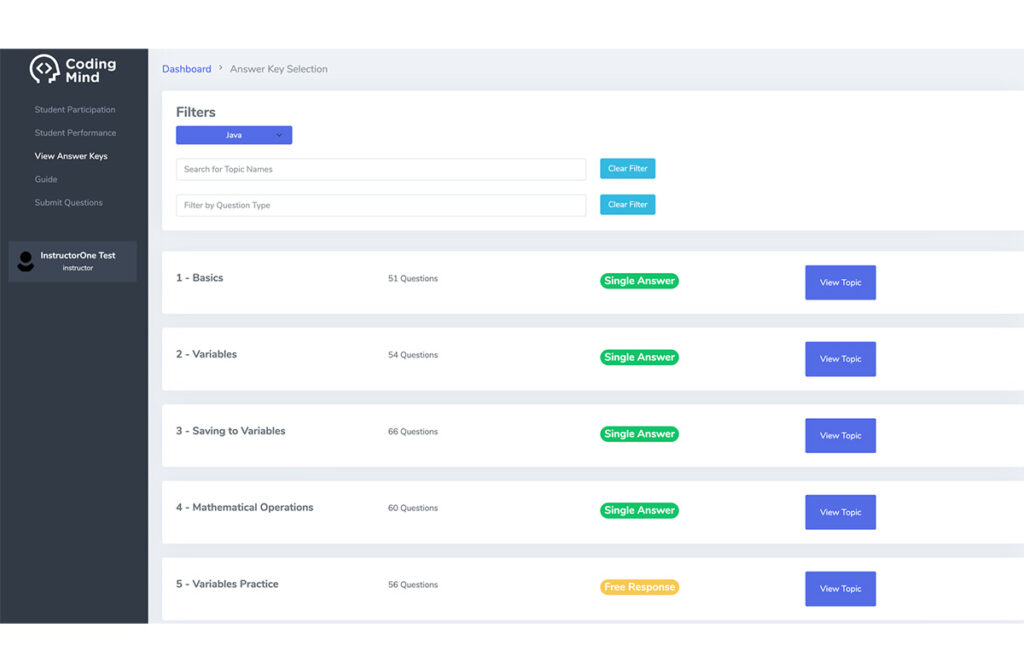(May 2022 – November 2022)
Authors: Samantha Shih, Tzu-Yu Sun, Jun-Cheng Lin, Chiun-Li Chin
Presenter: Samantha Shih
Published paper in 2022 International Conference on Fuzzy Theory and Its Applications (iFUZZY)
Introduction
Although nail diseases themselves are not necessarily fatal, nail diseases can be indicators of severe health problems, making early diagnosis very important. Three common nail diseases were examined. First is Beau’s lines, which is characterized by depression of the nail plate. Next is Terry’s nails, or the obliteration of the lunula. Third is clubbing, or soft tissue swelling in the terminal phalanx resulting in the straightening of the angle between the nail and the nail bed. All three of these diseases are more common and are all associated with some severe health problems.
In this research, we use AlexNet with Attention, or AWA, to classify the three nail diseases chosen.Because nail diseases often act as an indicator of more severe diseases or health problems, early diagnosis can assist doctors in determining these other diseases in their earlier stages.
Research Process
In order to determine what was missing from the field of machine learning applications to nail disease classification, many previous papers and works were examined.
In 2017, Nijhawan et al. classified multiple nail disease, one of which is Beau’s lines, through a hybrid of Convolutional Neural Networks. This only attained an accuracy of 84.58%, which we sought to improve.
Yani et al. classified Terry’s nails through Inception V3 and achieved an accuracy of 95.24%. However, this only classifies Terry’s nails, so it is not as applicable to the real world where there are many different nail diseases.
In 2019, Juna and Dhananjayan found that because nails are located the farthest from the heart, nail diseases can act as a strong indicator of problems within the human body. Classification of nail diseases would help indicate health problems.
In 2021, Gollins and Berker found that changes in color, size, shape, or textures of nails can be an indicator of systemic diseases. They found that the ability to interpret nail diseases can help guide the diagnosis and management of a general medical patient. For example, clubbing is often caused by a thoracic disease.
In 2017, Nijhawan et al. classified multiple nail disease, one of which is Beau’s lines, through a hybrid of Convolutional Neural Networks. This only attained an accuracy of 84.58%, which we sought to improve.
Yani et al. classified Terry’s nails through Inception V3 and achieved an accuracy of 95.24%. However, this only classifies Terry’s nails, so it is not as applicable to the real world where there are many different nail diseases.
In 2021, Abdulhadi et al. classified multiple nail diseases including clubbing through five different pretrained Convolutional Neural Networks (AlexNet, VGG16, GoogleNet, ResNet50 and DenseNet201). Though they were able to reach an accuracy of 96.39%, their dataset contained only 70 images per nail disease, making their model less generalized.
In 2021, Niu et al. reviewed attention mechanism in many models in recent years and found that it increases both the efficiency and the accuracy of perceptual information processing.
In 2022, Wei et al. proposed AlexNet with attention mechanism to identify lesions in the nucleus. The accuracy is higher than that of the model without the attention mechanism, so the benefit of using attention mechanism in AlexNet is great. We are the first to propose using the AWA model to classify the three nail diseases.
Contributions
Most scholars use deep learning to classify nail diseases but do not use attention mechanism. Thus, we added attention mechanism for nail disease classification.
We are the first to propose AWA to focus on the less noticeable features that characterize three nail diseases.
Use of our method can improve the accuracy of nail disease classification of three specific nail diseases that no previous studies have classified.
Nail diseases can be indicators of severe health problems and have so many varieties that there are few contributions for many diseases, making our contribution significant.
Method
Flowchart
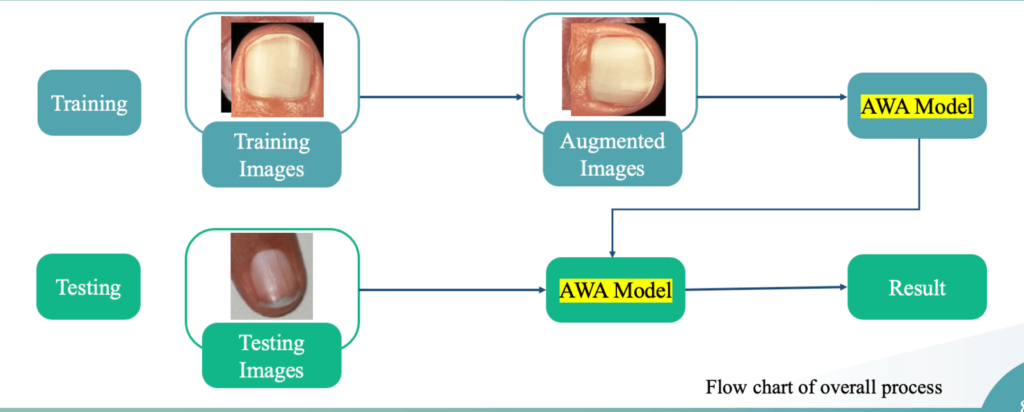
This flowchart is our proposed process. It is divided into two parts: training and testing.
First, in the part for training, the first step is to input training images, which consist of images of the three types of diseases chosen. Then we augment the images. These images are then fed into the AWA Model to train it.
Next, in the part for testing, we feed the testing images into our AWA model for nail disease classification from training. The model outputs the resulting classification.
Dataset
In this paper, all nail disease images are obtained from the Nails Image Dataset. These include 100 images of each type of disease: Beau’s lines, Terry’s nails, and Clubbing, to a total of 300 images. The images on the slide show what each type of disease looks like.

Image Augmentation
In order to enhance the generalization of the model, we rescale, rotate, and shift the images for performing data augmentation. There are 55,200 images in the final dataset after augmentation.

Train-Test Split
The data is split with 70% for training, 10% for validation, and 20% for testing.
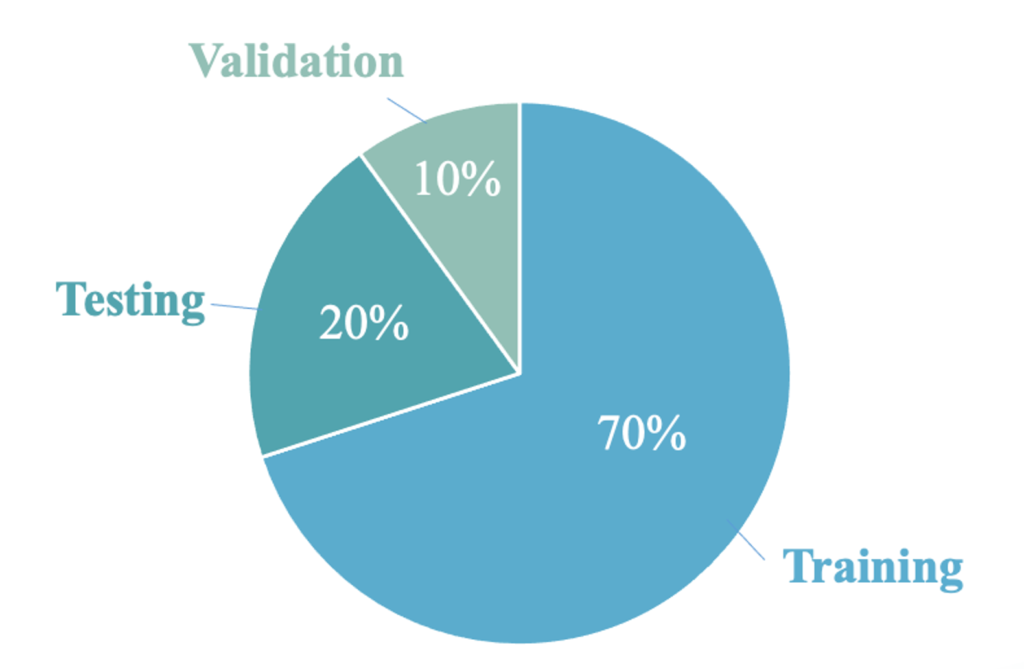
Model Selection
AWA was chosen because nails have less noticeable features that AWA can better focus on, thus improving accuracy.
Nail diseases are characterized by slight differences in areas such as the lunula. Attention modules help the model focus on these areas.

In AWA, the third convolution layer and third max pooling layer are input into one attention module, while the fourth convolution layer and third max pooling layer are input into the second attention module.
The results of each attention module and the third max pooling layer are then fused to determine the resulting classification of nail disease.

Loss Function
We use cross entropy as our loss function to evaluate the training performance of the model.
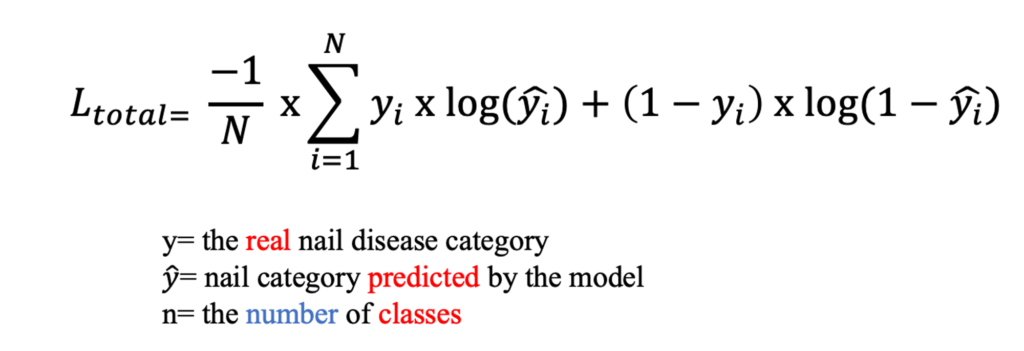
Environment Settings
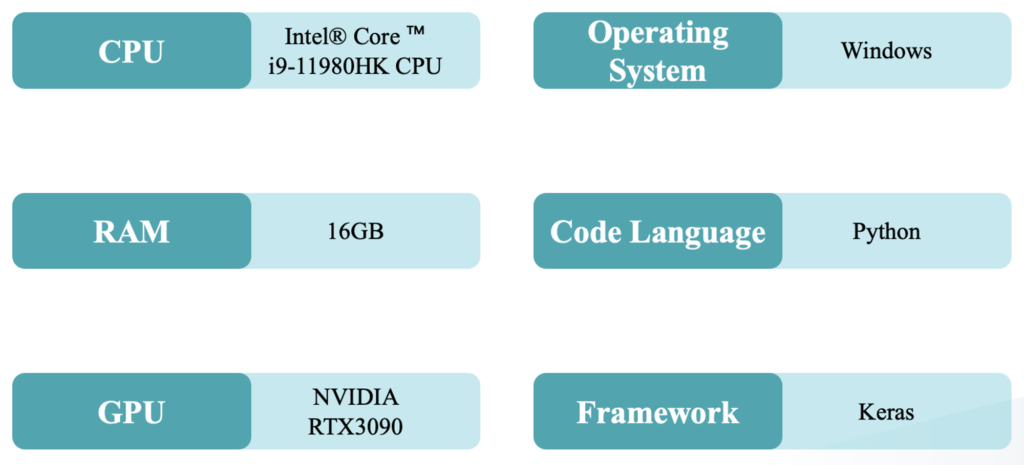
Results
After training AWA, we evaluated the performance by the confusion matrix. We found that accuracy, sensitivity, and specificity are all 86.67% respectively, while precision is 88.60%.
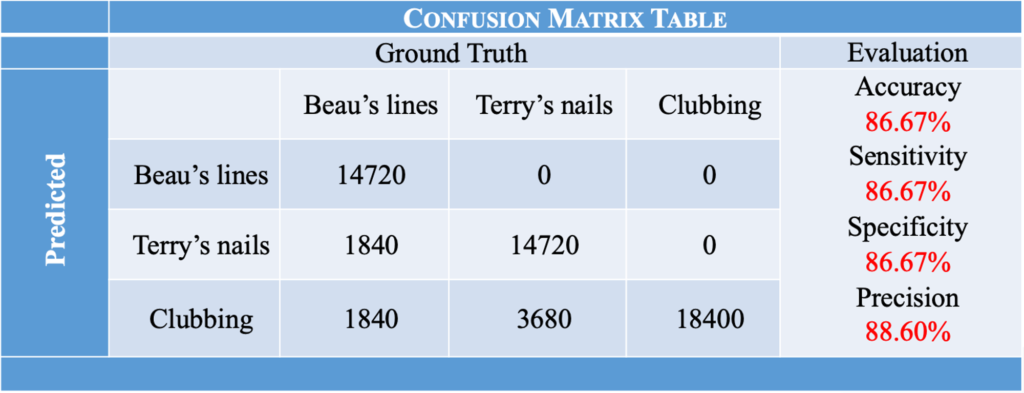
Here are the results of our paper.
The training accuracy was 97.50% and the testing accuracy was 86.67%, which is when the batch size was 22, the epoch value was 230, and the learning rate was set to 0.001
We also found that Beau’s lines and Terry’s nails are more likely to be inaccurately classified compared to clubbing. This may be due to low resolution of misclassified images or the presence of more than one nail per image. Images could also be misleading because nails are so reflective that the images often contain light that could be mistaken for whitening of a part of the nail.
Discussion
In the final result, the accuracy, sensitivity, and specificity of nail disease classification is 86.67%, respectively, while the precision is 88.60%.
In the confusion matrix, we found that the precision index of Beau’s lines is 100%, which increases the overall precision percentage.
Images were often classified inaccurately because of the existence of more than one nail per image or due to darker lighting and low resolution.
We found that Terry’s nails was misclassified as clubbing. A probable reason is that the white spots of the nail that characterize Terry’s nails were mistaken as the reflection that clubbing images often have.
The accuracy percentage of clubbing is 100%. It is the best identified of the three categories. A probable reason is that the straightening of the angle between the nail and nail bed that characterizes clubbing is very obvious and it has very distinct characteristics.
The use of AWA is also shown to have a higher classification accuracy than just AlexNet alone. When we tested AlexNet, it only achieved an accuracy of 83.0%. This shows that the accuracy is improved with AWA.
Conclusion
Using AWA can focus on the less noticeable features of nails that define three nail diseases, which achieves better results than just AlexNet.
An accuracy of 86.67% was reached, which is an improvement to the current field of research in nail disease classification.
In the future, we hope to improve the accuracy and classify more categories of nail diseases which will assist doctors in diagnosis of nail diseases, leading to earlier diagnosis of any severe diseases associated.
